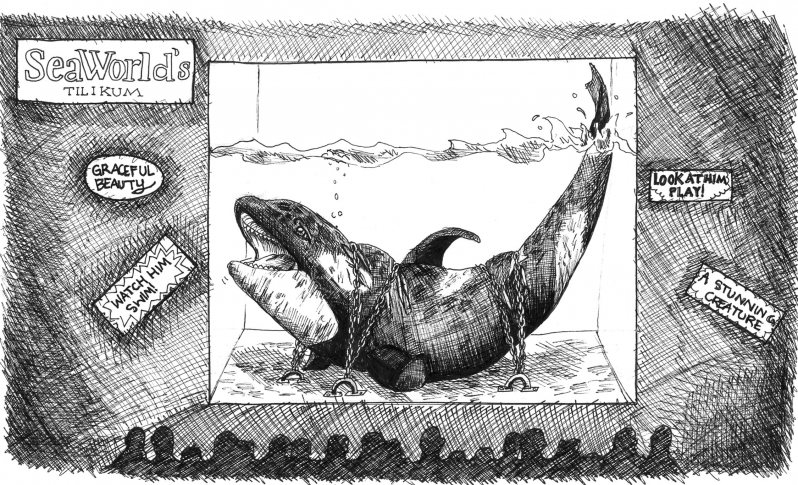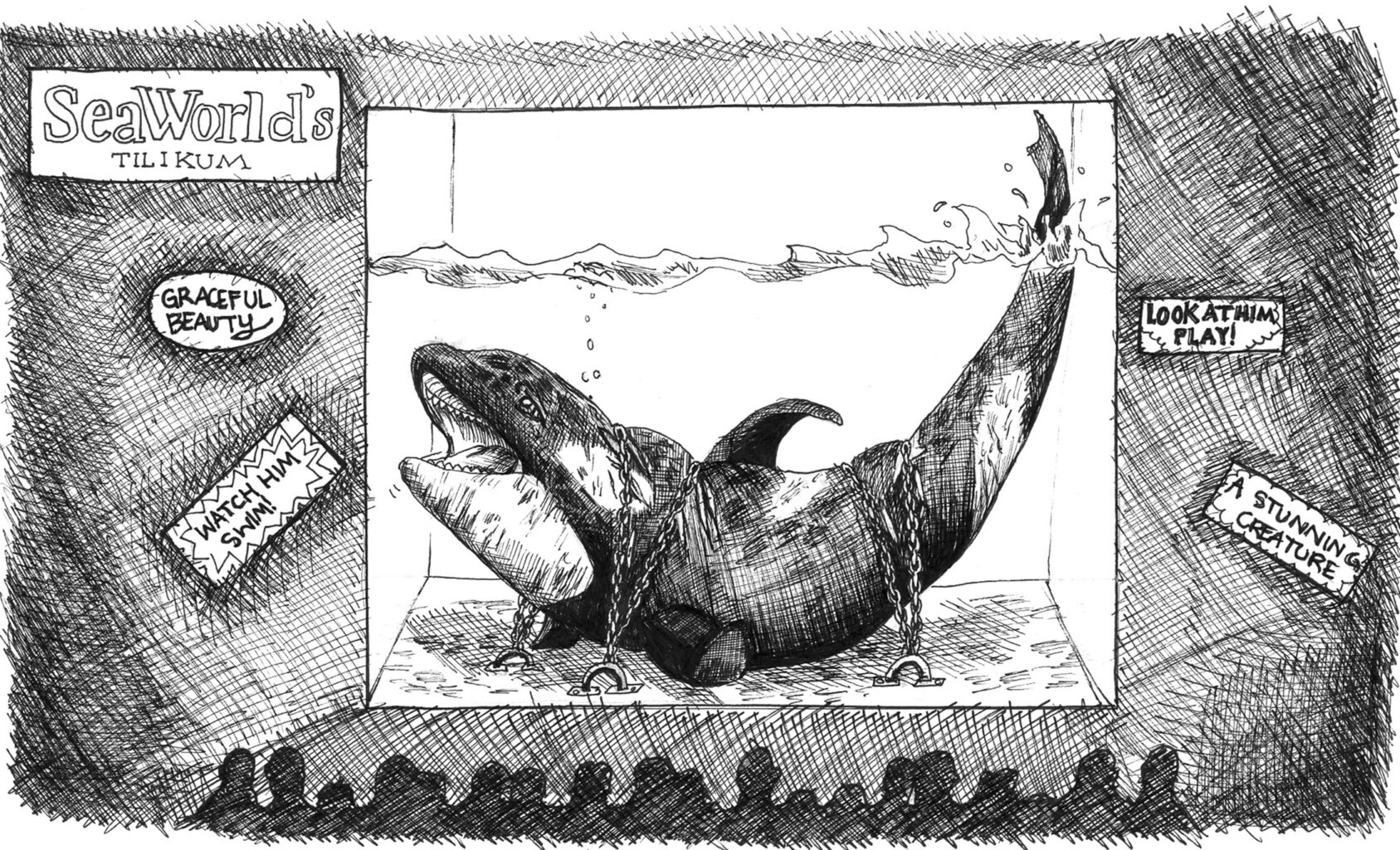
By EMILY WATSON – Web Writer
In the wild, there have been no accounts of orcas, commonly known as killer whales, ever killing humans. In captivity, however, whales have killed four people and injured dozens more.
Blackfish, released on July 19, 2013, is a documentary directed by Gabriela Cowperthwaite, a documentary filmmaker who has been making television documentaries for 15 years. The film focuses on the poor treatment and dangers of keeping orcas in captivity at marine-park giant, SeaWorld. The film focuses on Tilikum, a 12,000-pound killer whale responsible for the deaths of three people, including famed trainer Dawn Brancheau, during the course of two decades.
The film contains various interviews from former SeaWorld trainers as well as marine biologists and orca experts. They accuse SeaWorld of misleading trainers and covering up the deaths and the poor treatment of the whales. The film emphasizes the fact that SeaWorld continually attempts to hide the killer whale attacks that have happened there.
The beginning of Blackfish is gut-wrenching. Viewers are shown footage of the capture of Tilikum along with other whale calves. The scene is sympathetically narrated by John Crowe, a former whale hunter and diver who explains the rounding of the orcas and how they are taken from their pods.
“We were only after the little ones,” Crowe said.
Tilikum was taken to Sealand of the Pacific in British Columbia, Canada, where whales were kept roped off from the ocean. At night, he and various other whales were placed in separate holding tanks. The tanks were roughly 30 feet deep and 20 feet in diameter, almost as long as the whales themselves. Cowperthwaite argues these small tanks contributed to the whales’ aggression.
After an eerie report given by two witnesses of trainer and competitive swimmer Keltie Byrne’s death, the film follows Tilikum as he is purchased and taken to SeaWorld Orlando two months later.
While there, Tilikum is responsible for the death of Daniel Dukes, a visitor, and Dawn Brancheau, a senior trainer. Brancheau had been working with the whale when he grabbed her arm, pulled her into the water, swung her around dislocating her elbow, breaking her jaw and eventually scalping her.
SeaWorld originally blamed the attack on Brancheau saying she had handled fish and then touched her hair, confusing the whale.
The footage is painful to watch. It shows bleeding whales raked by other orcas, trainers dragged into pools and one grisly scene in which a trainer is crushed when one whale lands on him. Rather than blame the killer whales for their aggressiveness, the film presents orcas as complex, social creatures, whose demands cannot be met in captivity.
Even though the documentary’s information is sickening, Blackfish is worth seeing, though it may be a shocking, tear-filled experience.
More from Emily Last
